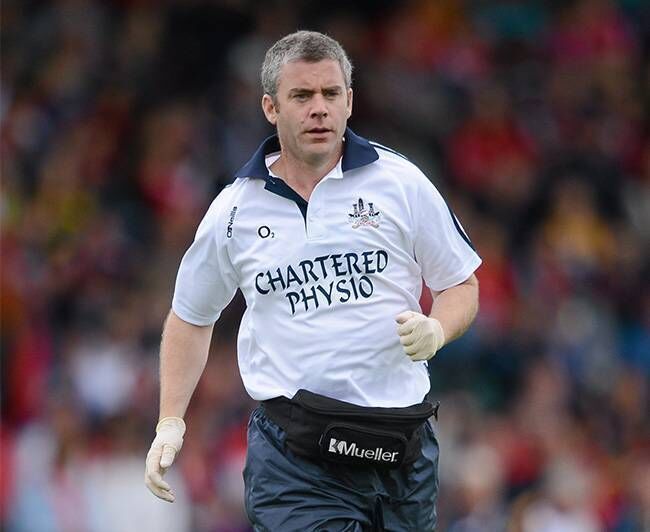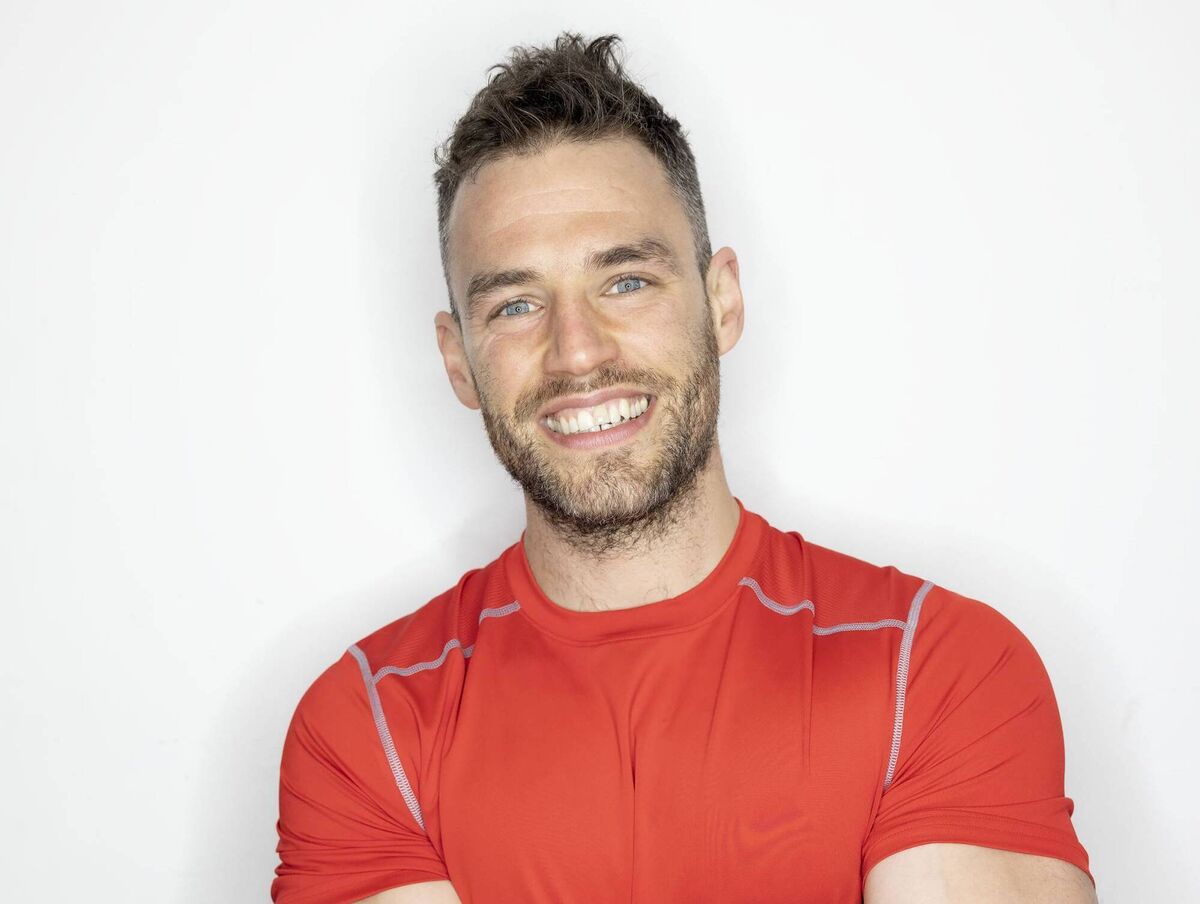Colin Lane saw a range of injuries during his 18 years as a physiotherapist for Cork’s senior footballers. But recently there was a “twist”: A client in his mid-20s undergoes hip replacement surgery due to wear and tear.
Those injuries say something about the physical stress that some young athletes put on themselves. He has another example: the difficult bodybuilding that some teenage boys take on.
“You’d have a dad bring his kid to me and they’d be at the door waiting for me and I’m like, ‘Who’s the father and who’s the son?’ Some of these rugby guys, especially, are big guys.”
Are teenage boys and young men exercising too much in the intense training and fitness they do, sometimes just to look good?
Lane, who runs Physio Active in Cork and is a member of the Irish Society of Chartered Physiotherapists, says: “The most important age, from a child development point of view, is that 12 to 16-year-old block, which steps up in terms of the demands of sport,” he says. “Their growth plates within their bones, and the hips in particular, haven’t fused yet, so they’re very susceptible to disruption from the excessive twisting and strain of sports.

Ben Daly, senior strength and conditioning coach at UMPC Sports Surgery Clinic and Sports Medicine, in Dublin and Mayo, has also seen his share of ‘overuse’ injuries. “Some of them are out six nights a week.” [training]and their bodies are breaking down,” says Daly.
But for all the early and excessive wear and tear that comes from team sports, harming your health while chasing the “perfect body” is also a problem. Just this year, the health regulator revealed that anabolic steroids would be the second highest class of drug seized in 2023, with Grainne Power, the HPRA’s director of compliance, telling the Irish Times: “We believe that young men, in particular, may be supplying anabolic steroids to to enhance your body, while you are unaware of the serious health problems these products bring.
Brian Keane is an online personal trainer and nutritionist who has spent the last 12 years working primarily with two groups: Those in their 40s and 50s who want to lose weight; and a younger group of men, aged 18 to 24, many of whom are athletes, play GAA and rugby at a high level. The latter is a group, he says, “who are in the gym looking to get fitter, stronger and faster”.
Keane says there has been a “tremendous” change in the way some young men approach training, adding: “Six to seven years ago, things started to lean away from fitness and more towards looks: building muscle.”
He focuses on making sure people don’t get hurt. “I get so many players doing way too much and getting these soft tissue injuries, because they’re overtrained and under-motivated.

Exercise programs promoted on social media can do more harm than good, says Keane. He sees between 300 and 400 clients a year and says that a one-size-fits-all approach would never work. Instead, a personalized, tailored approach to fitness based on the person’s size and shape is needed.
“If that [social media] is big enough to run election campaigns, it can definitely influence how someone trains,” says Keane. “If you follow a copy of a random influencer [their movements] it could be completely different than [your requirements].”
Even among today’s sports models, it’s necessary to see the nuances, he says. For example, just because the victorious (until this year, at least) Limerick hurlers are imposing physical displays, it does not mean that everyone should run to the gym and start pumping iron. These pitchers are surrounded by a team of experts and nutritionists who take each player’s physical attributes into account in how they train and recover. The treatment that suits the guy who is 6ft 4ins will not suit the guy who is 5ft 6ins.
Searching for the “perfect” body
While body image affects people of all ages and backgrounds, Ellen Jennings, communications officer at Bodywhys, says, “Research tells us that most young people in Ireland are not happy with their appearance and that this is causing them difficulties in their lives.
She points out how the pursuit of the “perfect body” can be linked to body dissatisfaction, which can lead to eating disorders or worse.
“During a recent Bodywhys webinar, titled ‘Body Image: The Male Perspective,’ we heard the same factors come up several times as key influences from all participants,” says Jennings. “It’s so important to raise awareness that body image issues are common among men.
She adds: “The boys’ bagel also had a big impact. It can prevent friends from talking candidly with friends about body image concerns, which can exacerbate the issue.”
Aggressive cross-platform marketing of the ideal muscular male body puts boys and young men under pressure.
“Certain body ideals and beauty standards are pervasive in social media content, mainstream media, and advertising,” says Jennings. “These ideals are often unrealistic and unachievable and follow a very narrow illusion of ‘perfection’. Excessive exposure to this type of content can lead to self-doubt, self-consciousness, and body image concerns.
“Social media tends to be about showing our best selves and the best in our lives. We are bombarded with perfect images of everyone else and this can lead to feelings of ‘not good enough’.”
Jennings says that fitness-related social media accounts can encourage and promote unrealistic and unhealthy body shapes, sexualization, objectification, fitness addiction, excessive control over eating habits, body dissatisfaction and appearance-related anxiety.
“Negative body image and feelings of shame, discomfort, or embarrassment about our bodies can spill over into other areas of our lives and prevent us from pursuing activities or goals that are important to us,” she says.
“However, it is possible to be aware of unhealthy thought patterns or negative effects on body image and choose to reduce our exposure to these.”
Dietary supplements
This push for perfection and constant pressure from peers and social media can lead to an a-la-carte approach to online shopping for muscle growth supplements.
Yet, according to SafeFood, supplements are really only necessary for certain age groups, such as folic acid for pregnant women and vitamin D at certain times of the year.
Many supplements simply wash out of the system and negate the potential value of taking them, and that’s before you look at the reputation of supplements plucked from the internet.
Fortunately, that fad may have peaked.
According to Keane, “It’s definitely relaxed in recent years. Five to six years ago it was a huge thing, people almost took it as a supplement first.
Daniel Davey, who runs Davey Nutrition, has worked with elite athletes for the past 12 years and claims that telling people not to take whey protein can be like telling people not to vape. Instead, he says, there is “a real lack of understanding of what the products are and their viability and what the process is”.

Whey protein is a practical solution to help people meet their protein needs, he says, “but it doesn’t do anything else.” The first food element has to be the basis of nutrition.”
Whey protein and similar solutions are, he argues, the “top” of the nutritional pyramid, not the base, and the athletes he works with share that view and reap the rewards.
It’s a matter of educating people, he adds, rather than encouraging younger people to use such products when they are normally unnecessary.
Bodywhys advises adolescent boys and young men to consider the negative effects on their body image and actually write them down. This could include the use of fitness apps, exposure to “fitspiration” or similar body content online, media ideals, fitness culture, and friendship groups where similar conversations are prevalent.
It also advises talking to a nutritionist or health professional to promote a more balanced approach to exercise and diet, which will promote well-being, and limiting the amount of social media you view each day, to avoid negative comparisons of your body.
The internet and social media are full of fitness influencers singing the praises of what has worked for them, preaching from the proverbial mountaintop, even though there’s no guarantee it will work for everyone else.
As always, it’s a simple mantra: Stick to the basics. And maybe give your body more time to recover and leave the heavy dead weight alone.
Reflecting on the shrinking size gap between fathers and sons, Lane adds, “You’re looking at their birthday, and then you look at them, and then at their parents, and you’re like, ‘this is scary.’ .”
- Advice and resources are available at www.bodywhysbodyimage.ie and can also be accessed via the Bodywhys helpline on 01-2107906 and by emailing alex@bodywhys.ie
#Pressure #Perfection #Adolescent #Boys #Risking #Health #Building #Muscle